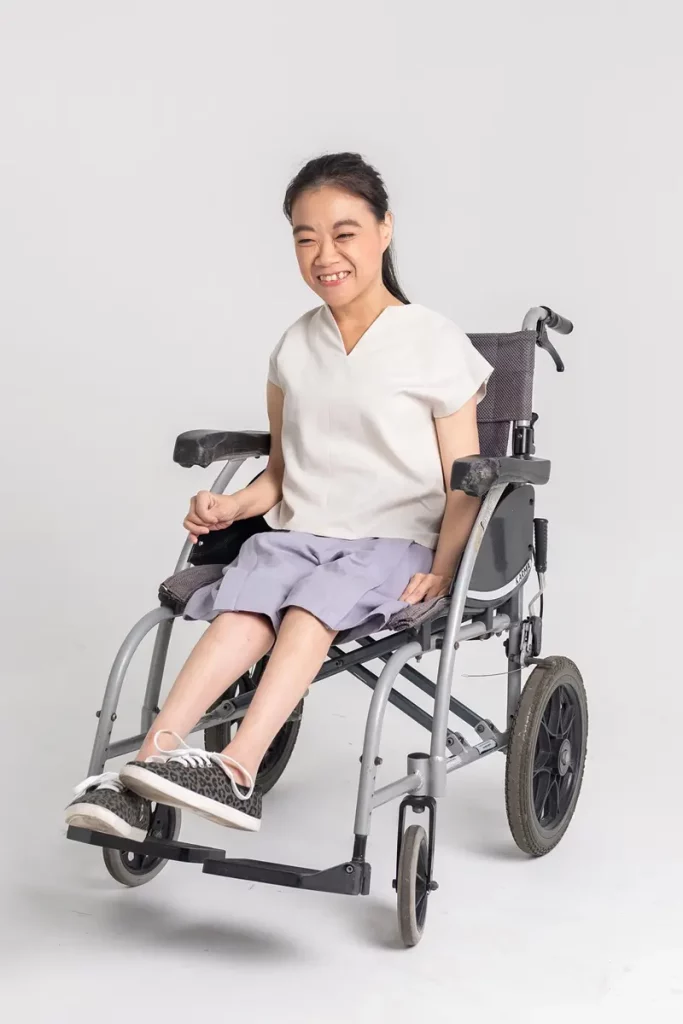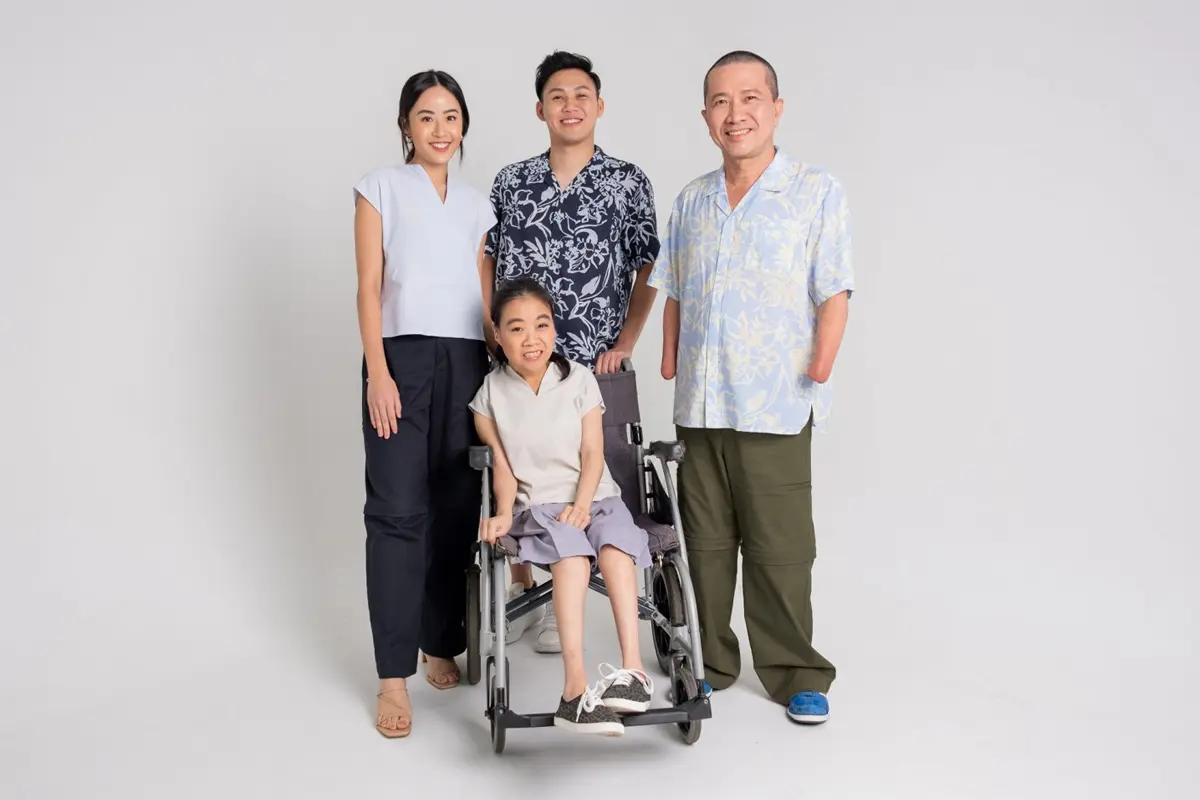The case of Will & Well. The disabled community has been left behind in the movement to make fashion inclusive. Adaptive apparel is underdeveloped within the industry
Fashion versus the need to be adaptive – about Human Diversity
We take for granted that we can pick clothing based on our style, what we like, and what fits us. The act of picking out an outfit, getting dressed and walking out the door is a task which has been built into our routine with no second thought. However, this isn’t the case for everyone. Fashion deems itself an aspect of human expression yet it rarely takes into consideration the community who needs it most; the adaptive side for those with disabilities. Of course, the industry has made leaps and bounds to try and cover as much territory as possible, from the plus-size community to people of color. However, one community seems to have been left behind.
Advocates and members from the disabled community believe the industry is still highly ableist. High-end fashion, for example, is still only accessible to a select group of people. Nowadays, it takes smaller brands who dedicate their designs to adaptive and accessible fashion to ensure that fashion does in fact remain inclusive.
Brand’s commitment to making fashion a discussion – the case of Will & Well
Will & Well is one of said brands. The Singapore-based clothing label designed a collection to ensure that people in the disabled community have more access to fashion. This collection, called Adaptable, was put on display at Singapore Design Week’s Playground of Possibilities. The designs are altered to make sure that people with all sorts of mobility issues can get dressed more easily. This includes different zips, velcro, two-way garments and elastic properties. Although the purpose was to shine a light on creating adaptive clothing, they also photographed able-bodied models in their garments. Such detail was done to ensure that the collection was inclusive overall. In one interview, the Head of Communications at Will & Well, Cheryl Tan, said: «We primarily design our products and services with the forethought of marginalized groups, including persons with disabilities, the elderly and caregivers. But the kind of inclusivity that we believe in is also one where everybody else in society, whether or not they have a disability, can benefit from ease in dressing».
There are various other gaps in the market in which fashion still needs to tap into to completely and utterly be described as ‘inclusive’. Auf Augenhoehe is a fashion brand which targets little people, a space which is highly recognized by its designer, Semi Gedik. Maxi skirts, tights, bomber jackets are just some of the garments which need to be altered to ensure the fit is continuously flattering on every size or shape.
Izzy Camilleri, founder of IZ Adaptive, dedicated her talents in fashion design to establish her brand at the forefront of adaptive fashion. Prior to 2009 when she first launched her label, Camilleri would design clothes for celebrities such as Meryl Streep. Slowly but surely, she started getting a couple of clients in wheelchairs who needed alterations. This is when Camilleri dove into the deep end of this market, holding focus groups, interviewing those within the disabled community and researching online. In doing so, the designer realized that «most of what was available was for the elderly or for people living in long term care facilities,» states her website. «Clothing that was very dated in both design and fabric choice».
Brands are definitely expanding to ensure every demographic is being catered for. However, it is no secret that many communities are being left as an afterthought. The choices are very few and far between, especially considering that what is offered pales in terms of aesthetic comparison. Alas, every community should see fashion as a tool to express themselves to the full extent.

Human Diversity: How disabled people are finding their identity through fashion
Lee Chambers is a psychologist and well-being specialist. In an interview discussing where fashion meets disability, she states: «Fashion is one of the most powerful ways we can communicate and express ourselves to the outside world. The challenge comes when instead of being able to reveal and express, we have to conceal and suppress because we’re unable to utilize fashion as a way of communication, which for some disabled people is already a challenge».
Those within the disability community struggle with self-acceptance and denial, losing themselves within a world which barely acknowledges them. Identity and expression are two characteristics which go hand-in-hand when it comes to using fashion as a tool to navigate day-to-day life. Although other industries are also slow to catch up when it comes to catering to the disabled, fashion needs to step up to give this community the opportunity to assimilate their individual disabilities into their identities.
Innovating adaptive fashion for Human Diversity
Adaptive clothing can be boring. Far from what fashion is supposed to be, clothing which is truly inclusive of the disabled community barely edges away from the beige practicality that comes with ‘basic’ garments. In other words, they only exist to be functional. This detail alone is impacting disabled people more than simply having less-expressive ways to dress themselves.
The disabled community have to continuously fight to ensure that they are being heard by those in charge of infrastructure, education, the workplace and so much more so as not to be overlooked. The psychological effects create and maintain a cycle in which disabled people struggle to find their identity in society. As mentioned above, fashion allows various aspects of our personality to fit together. However, the slow progress of adaptive fashion within the industry creates a slight – yet equally impactful – stigma within the community that stops the cogs of inclusivity.
The work that still needs to be done – how fashion is failing the disabled community
«I can count the number of mass fashion brands with adaptive lines on one hand. In general, people are more likely to use something that they find beautiful», stated Christina Mallon, Chief Brand Officer at Open Style Lab in an article. «Many assistive device designers only consider function causing the devices to lack style. Allowing one to customize the device’s appearance helps their relationship with the devices». Fashion works the same for everyone out there. Even for the simplest task of going out shopping, everyone should be able to pull out items from the endless racks, try them on in the changing rooms and then choose whether or not to purchase them without being afraid of having to go home empty handed.
The issue with disability in the fashion industry is two-fold: the lack of brands catering to said market and the lack of aesthetic designs which every community deserves. Cat-walks often show luxury brands creating flamboyant and alien-like garments which are less than practical in everyday life. Yet, they embody that fashion element. When it comes to adaptive fashion, the issue is the complete opposite. The practicality is there but the design is not.
Of course, it is easier said than done. Although brands can slowly produce collections which cater to the disabled market, it isn’t just about creating a line of stylish garments. Just like with everyone else, one style of clothing may be appealing to one person but not to someone else. Adaptive clothing needs to have variety and choices, color and patterns, flamboyance and simplicity to ensure that it can truly fit in with the industry’s inclusivity standards.
The financial gain – Human Diversity
Keely Cat-Wells is the CEO and founder of C Talent and Zetta Studios, both companies which ensure that disabled people get access to the same opportunities as everyone else. In an interview with Forbes, she discusses the financial aspect of this market. «Disabled people constitute the largest minority group in the world, yet are the most underserved and underrepresented. If one does not design for accessibility, it is as if you’re telling every fourth person that comes through your door that you don’t want their business». In other words, companies are missing out on a major business opportunity by ignoring the sheer size of this market.
Solely in the US, the disabled market has an estimated spending power of $490 billion. This statistic is only one example of why brands should tap into this particular market. Customers are more likely to shop from brands which make them feel more confident and comfortable. Designing more adaptive apparel would ensure that customers get a wider range of options to choose from, leading to a strategic business cycle. Businesses should therefore be incentivized to develop more adaptive collections, if not for the moral side of things, for the financial gain.
Will & Wells
Will & Wells is an inclusive fashion label dedicated to changing the way we wear clothing. Whilst the brand doesn’t solely represent the disabled community, they do produce apparel which can be worn by everybody. Their collection, Adaptable, was featured at Singapore Design Week’s Playground of Possibilities. In the promotional advertising for the collection, both disabled and abled people modeled the clothing, making sure that their garments were seen as inclusive.



















